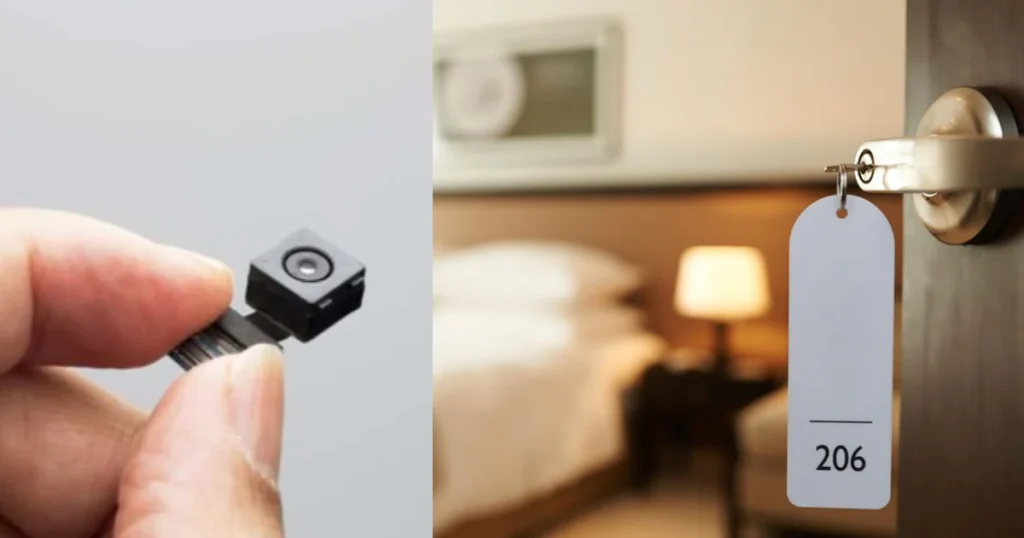In today’s hyper-connected world, privacy is more vulnerable than ever. From smart home gadgets to easily concealable surveillance devices, it has become disturbingly easy for bad actors to monitor others without consent. Whether you suspect someone may be spying on you at home, in the office, or in a hotel room, knowing how to detect hidden cameras and listening devices is a valuable and empowering skill.
This comprehensive guide walks you through the practical steps, tools, and warning signs that can help you uncover covert surveillance devices and protect your privacy.
Why Someone Might Spy on You
Before diving into detection techniques, it helps to understand the motivations behind illicit surveillance. People might install hidden devices to:
- Monitor employees or co-workers
- Spy on a romantic partner
- Steal intellectual property or trade secrets
- Eavesdrop on sensitive meetings
- Invade privacy out of malice or obsession
Understanding the motive can help you determine where and what to search.
Common Places Hidden Devices Are Placed
Surveillance equipment is often small and disguised as ordinary objects. Hidden cameras and microphones may be concealed in:
- Smoke detectors or carbon monoxide alarms
- Wall clocks and picture frames
- USB chargers or power strips
- Light bulbs or ceiling fixtures
- Air vents or HVAC units
- TV set-top boxes, routers, and cable boxes
- Stuffed animals or toys (especially in children’s rooms)
- Office plants or decorative items

Signs You May Be Under Surveillance
Watch for these subtle signs that may suggest hidden monitoring:
- Unusual or unfamiliar items that suddenly appear
- Misaligned furniture or fixtures
- Odd holes or reflective surfaces in walls or objects
- Unexpected interference or static in phone calls or electronics
- Sudden battery drain on mobile devices or increased data usage
- Clicking, buzzing, or beeping sounds when electronics are off
Step-by-Step Detection Process
1. Conduct a Physical Inspection
Start with a visual sweep of the room:
- Turn off the lights and shine a flashlight around suspicious areas. Camera lenses may reflect light.
- Check vents, smoke detectors, and light fixtures.
- Inspect decorations and electronic devices for odd wiring or alterations.
- Use a mirror to inspect high corners or hidden angles.
2. Use Your Smartphone
- Camera Lens Detection: Many smartphone cameras can detect infrared (IR) light. Turn off the lights and point your phone’s front-facing camera (which often lacks an IR filter) around the room. Hidden cameras using night vision may show glowing lights.
- RF Detector Apps: Some apps claim to detect radio frequencies, but these are limited in functionality unless paired with external sensors.
3. Invest in a Bug Detector or RF Scanner
Professional bug detectors scan for RF (radio frequency) signals emitted by wireless devices:
- Sweep slowly around electronics, fixtures, and hidden areas.
- RF meters detect active transmitting devices, such as Wi-Fi cameras or wireless microphones.
- Be aware of false positives from legitimate devices like routers and Bluetooth speakers.
4. Use a Non-Linear Junction Detector (NLJD)
If you want to go deeper or hire a professional, an NLJD can detect semiconductors used in electronic circuits, even if they are turned off. These devices are expensive but highly effective.
5. Scan for Infrared and Thermal Signatures
- Use thermal imaging cameras to detect unusual heat signatures in walls, furniture, or electronics.
- Some hidden devices emit minimal heat, but any unexplainable warm spot could warrant further inspection.
6. Check Your Wi-Fi and Bluetooth Networks
Use your smartphone or computer to scan for devices on your network:
- Look for unfamiliar names or devices connected to your Wi-Fi
- Use network analysis tools like Fing or NetSpot
- Disable Bluetooth when not in use to prevent unwanted connections
7. Listen Carefully
In a quiet environment, listen for clicking, humming, or static sounds, which may come from hidden audio devices or cameras.

Professional Help: When to Call an Expert
If you strongly suspect illegal surveillance or need confirmation for legal or business reasons, consider hiring a professional with Technical Surveillance Countermeasures (TSCM) expertise.
A trained TSCM expert will use:
- RF spectrum analyzers
- Non-linear junction detectors
- Thermal imagers
- Acoustic leakage tests
- Physical inspections with specialized tools
These services can be expensive, but for high-stakes cases or persistent threats, they provide peace of mind and thorough results.
How to Prevent Hidden Surveillance in the Future
- Secure physical access: Limit who can enter your space unsupervised.
- Use privacy screens and locks: Keep private meetings secure.
- Install counter-surveillance tools: Motion sensors, jammers (where legal), and camera detectors can deter eavesdropping.
- Change Wi-Fi passwords regularly: To prevent remote device access.
- Educate yourself and your team: Awareness is your best defense.
Legal Considerations
In many jurisdictions, placing hidden cameras or audio recorders without consent is illegal. However, the laws vary:
- Audio recording often requires at least one-party consent.
- Video surveillance without audio may be legal in public or common areas.
- In private areas (like bedrooms and bathrooms), any form of surveillance is typically prohibited.
If you find a hidden device, do not tamper with it. Document the discovery with photos or videos and report it to law enforcement, especially if you believe you are being targeted unlawfully.
Final Thoughts
Your privacy is a fundamental right, and technology should enhance your life—not compromise your security. Learning how to detect hidden cameras and listening devices empowers you to take control of your personal and professional environment. Whether you use DIY methods or seek professional assistance, a proactive approach can protect your space from prying eyes and ears.
Stay vigilant, stay informed, and prioritize your privacy—because in the digital age, surveillance can be as close as the outlet on your wall.



